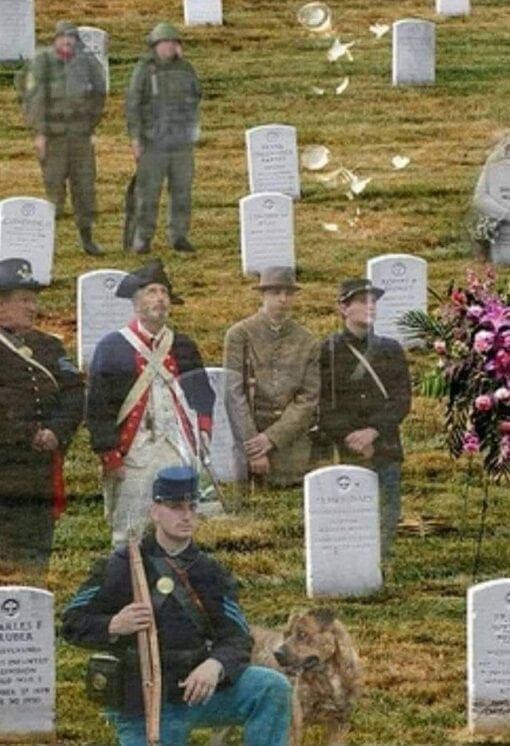Happy Memorial Day
Memorial Day is a Federal holiday in the United States. It is to honor and mourn the military personnel who died performing their duties while serving in the United States Armed Forces. The holiday was originally known as Decoration Day. Memorial Day is observed on the last Monday of May. From 1868 to 1970, it was observed on May 30.
Many people visit cemeteries and memorials on Memorial Day. Volunteers place American flags on the graves of military personnel in National cemeteries. Similarly, during the holiday season, wreaths are placed on military graves. We participate in the Wreaths Across America program at the Cheltenham Maryland Veterans Cemetery. It’s not too early for people to start making contributions for the upcoming event in December 2023.
Memorial Day is considered the unofficial start of summer in the United States. Similarly, Labor Day marks the unofficial start of autumn. It is celebrated on the first Monday of September.
Learn the History of Memorial Day
The exact origins of Memorial Day are uncertain. It came out of Civil War traditions of decorating the graves of fallen soldiers with flowers. Many cities and individuals have claimed to be the first to celebrate the event. In 1868, General John A. Logan of the Grand Army of the Republic (GAR) called for a “Decoration Day.” It was widely celebrated. By 1890 every Northern state had adopted it as a holiday.

We don’t know the origin of this picture, but would love to give credit.
World War I and World War II turned the holiday into a generalized day of remembrance. In 1971, Congress standardized the holiday as “Memorial Day” and changed its observance. Two other days celebrate those who have served or are serving in the U.S. military. One is Armed Forces Day, which is earlier in May. It is an unofficial U.S. holiday for honoring those who are currently serving in the armed forces. The other is Veterans Day. It is celebrated on November 11 of each year. It honors those who have served in the United States Armed Forces.
The history of Memorial Day in the United States is complex. The Department of Veterans’ Affairs recognizes that approximately 25 places claim to have originated the holiday. Many of these claims are myths that are unsupported by evidence. Others are one-time cemetery dedications or funeral tributes.
According to the United States Library of Congress, “Southern women decorated the graves of soldiers even before the Civil War ended. Records show that by 1865, Mississippi, Virginia, and South Carolina all had precedents for Memorial Day.” The earliest Southern Memorial Day celebrations were simple, somber occasions for veterans and their families to honor the dead and tend to local cemeteries. In following years, the Ladies’ Memorial Association and other groups increasingly focused rituals on preserving Confederate Culture and the Lost Cause of the Confederacy narrative.
In April 1865, following the assassination of President Lincoln, commemorations were widespread. There were more than 600,000 soldiers of both sides who died in the Civil War. This meant that burial and memorialization took on new cultural significance. Under the leadership of women during the war, an increasingly formal practice of decorating graves had taken shape. In 1865, the Federal Government also began creating the United States National Cemetery System for the Union war dead.
By the 1880’s, ceremonies were becoming more consistent. The GAR provided handbooks that presented specific procedures, poems, and Bible verses for local post commanders to utilize in planning the local event. In the 20th century, various Union memorial traditions that were celebrated on different days merged. Memorial Day eventually extended to honor all Americans who died while in the military service. Indiana from the 1860’s to the 1920’s saw numerous debates on how to expand the celebration.
The name “Memorial Day” was first used in 1882. It gradually became more common than “Decoration Day” after World War II. It was not declared the official name by Federal law until 1967. On June 28, 1968, Congress passed the Uniform Monday Holiday Act. It moved four holidays, including Memorial Day, from their traditional dates to a specified Monday. This was done to create a convenient three-day weekend. The change moved Memorial Day from its traditional May 30 date to the last Monday in May. The law took effect at the Federal level in 1971. After some initial confusion and unwillingness to comply, all 50 states adopted Congress’s change of date within a few years.
Since 1868, Doylestown, Pennsylvania, has held annual Memorial Day parades. It claims to be the nation’s oldest continuously running celebration. Grafton, West Virginia has also had an ongoing parade since 1868. However, the Memorial Day parade in Rochester, Wisconsin, predates Doylestown’s by one year.
The Symbolism of Poppies for Memorial Day
After the Second Battle of Ypres in 1915, Lieutenant Colonel John McCrae wrote the poem, “In Flanders Fields.” He was a physician with the Canadian Expeditionary Force. The poem’s opening lines refer to the fields of poppies that grew among the soldiers’ graves in Flanders. Inspired by the poem, YWCA worker Moina Michael attended a YWCA Overseas War Secretaries’ conference in 1918 wearing a silk poppy pinned to her coat. She distributed over two dozen more to others present. In 1920, the National American Legion adopted the poppy as its official symbol of remembrance.




